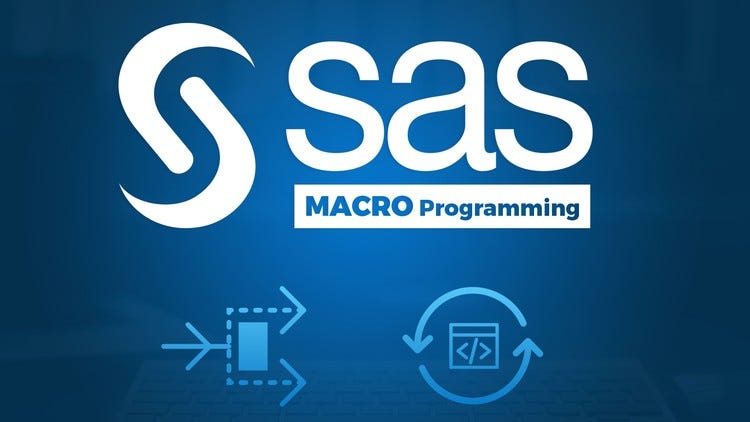
Introduction
In the universe of data analysis and processing, SAS (Statistical Analysis System) is a robust and comprehensive tool. Among the numerous features it provides, SAS’s macro facility is particularly potent, substantially enhancing the language’s versatility and functionality. SAS macros allow automation of repetitive tasks, significantly accelerating and streamlining your data analysis and manipulation processes. This exhaustive tutorial aims to provide you with a deeper understanding of SAS macros and guide you through their effective use for efficient data manipulation.
What are SAS Macros?
At the most fundamental level, a macro is a code segment designed to automate tasks that would otherwise require manual execution. In SAS, the macro facility serves as a toolkit for expanding and personalizing the SAS language. SAS macros can handle a broad spectrum of operations, ranging from simple tasks like variable substitution to complex ones like generating new SAS programs.
Employing SAS macros can greatly enhance your efficiency when dealing with data. Macros enable you to write code once and use it repeatedly, thereby saving time and minimizing the risk of errors. Moreover, macros can make your code more readable and easier to maintain, as they facilitate the separation of your program’s logic from the specifics of the data under consideration.
Key Elements of SAS Macros
SAS macros comprise several critical components:
Macro Variables: Macro variables act as placeholders storing text. When a macro variable is used in a SAS program, it gets replaced by the text it contains.
Macro Definitions: A macro definition is a code block that encapsulates the macro’s name and the code it executes.
Macro Calls: A macro call is a command that triggers the execution of a defined macro.
Let’s delve deeper into these elements.
Macro Variables
There are two types of macro variables in SAS: global and local. Global macro variables remain accessible throughout the entire SAS session, while local macro variables can only be accessed within the specific macro in which they are defined.
Macro variables are established with a `%let` statement. For instance, the following code creates a global macro variable named ‘dataset’ and assigns it the value ‘SalesData’:
%let dataset = SalesData;
To use the macro variable, you would use the `&` symbol before the variable name. For instance, to print the ‘SalesData’ dataset:
proc print data=&dataset;
run;
Macro Definitions
Macro definitions in SAS start with a `%macro` statement and end with a `%mend` statement. The `%macro` statement includes the macro’s name and any parameters the macro takes. The `%mend` statement signals the end of the macro definition.
Here’s an example of a simple macro definition:
%macro print_dataset(dataset);
proc print data=&dataset;
run;
%mend;
This macro, named ‘print_dataset’, takes one parameter: ‘dataset’. The macro prints the specified dataset when it’s called.
Macro Calls
To execute a defined macro, you use a macro call. A macro call starts with a `%` symbol, followed by the macro’s name and any parameters in parentheses.
For instance, to call the ‘print_dataset’ macro with ‘SalesData’ as the parameter:
%print_dataset(SalesData);
This call would execute the ‘print_dataset’ macro, printing the ‘SalesData’ dataset.
Advanced SAS Macro Techniques
Once you’re comfortable with the basics of SAS macros, you can explore more advanced techniques to further enhance your data manipulation capabilities.
Conditional Processing
SAS macros support conditional processing through `%if-%then-%else` statements, similar to `if-then-else` statements in traditional SAS programming. This allows you to write macros that behave differently depending on certain conditions.
Here’s an example of a macro that uses conditional processing:
%macro print_dataset(dataset, obs);
%if &obs = all %then %do;
proc print data=&dataset;
run;
%end;
%else %do;
proc print data=&dataset(obs=&obs);
run;
%end;
%mend;
In this macro, if the ‘obs’ parameter is set to ‘all’, the macro prints the entire dataset. Otherwise, it prints only the specified number of observations.
Looping
You can use `%do-%end` loops in your SAS macros, similar to `do-end` loops in traditional SAS programming. This allows you to perform repetitive tasks more efficiently.
Here’s an example of a macro that uses looping:
%macro print_multiple_datasets(n);
%do i = 1 %to &n;
%let dataset = dataset&i;
proc print data=&dataset;
run;
%end;
%mend;
In this macro, the ’n’ parameter specifies how many datasets to print. The macro then prints each dataset in turn.
Macro Functions
SAS provides a variety of macro functions that you can use to manipulate macro variable values. These functions are similar to functions in traditional SAS programming but operate on text rather than data values.
For instance, the `%substr` function can be used to extract a portion of a macro variable’s value, the `%upcase` function can be used to convert a macro variable’s value to uppercase, and the `%length` function can be used to determine the length of a macro variable’s value.
Conclusion
SAS macros are a powerful tool for automating and customizing your data manipulation processes. With a solid understanding of SAS macros, you can write more efficient, flexible, and maintainable SAS programs. Whether you’re new to SAS or an experienced programmer looking to enhance your skills, mastering SAS macros can significantly improve your data manipulation capabilities and open new possibilities for data analysis.
Find more … …
VBA for Beginners – Chapter 44 : Macro security and signing of VBA-projects
R tutorials for Business Analyst – R Exporting Data to Excel, CSV, SAS, STATA, Text File